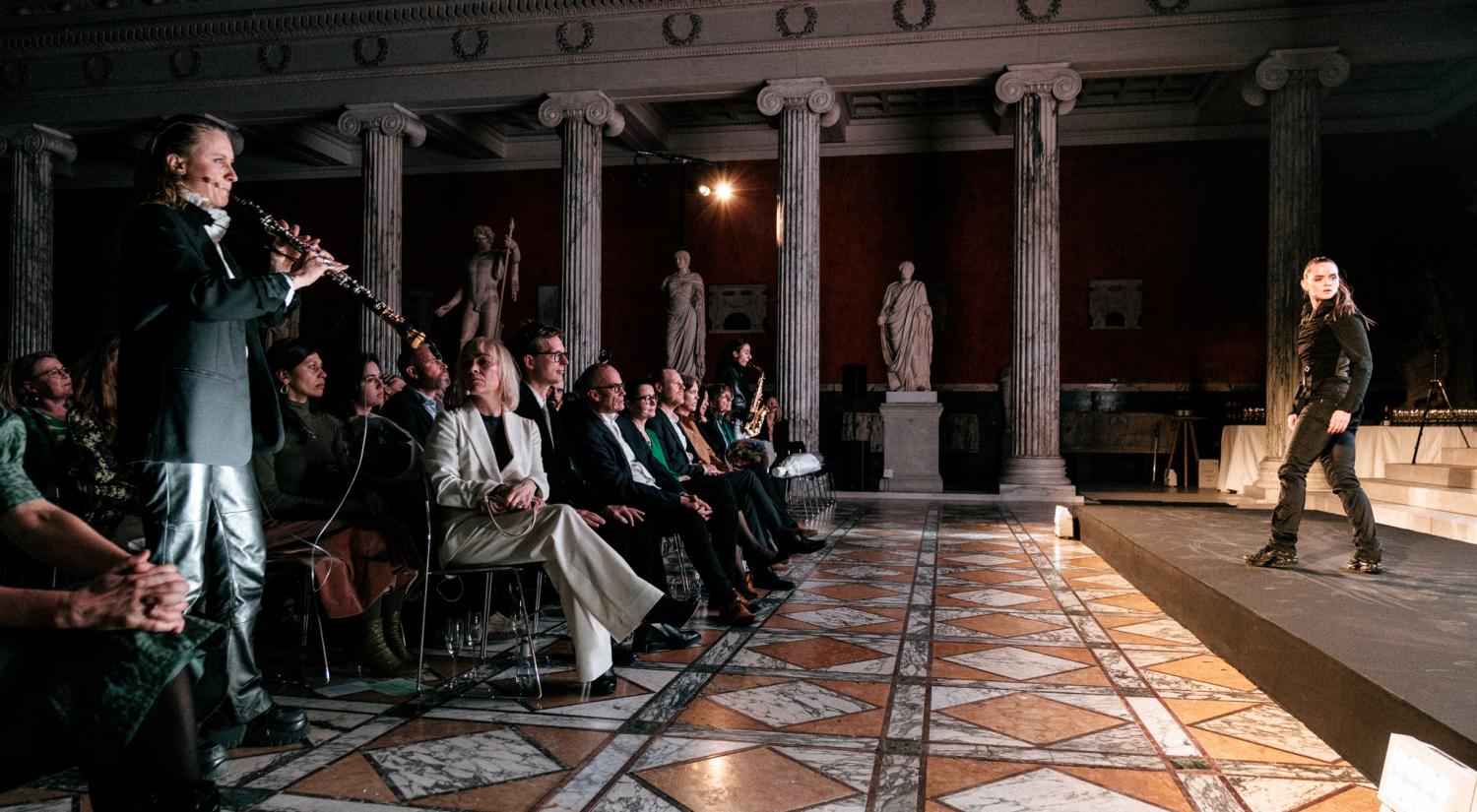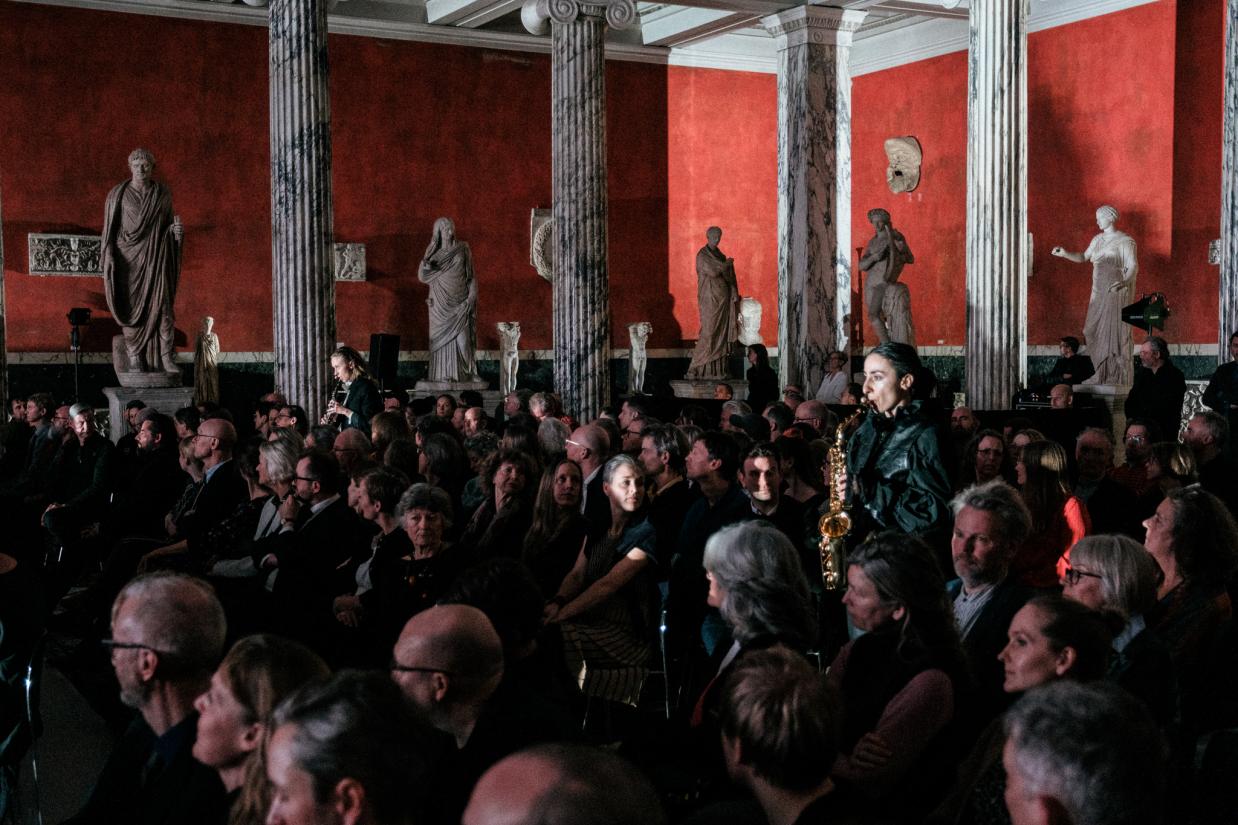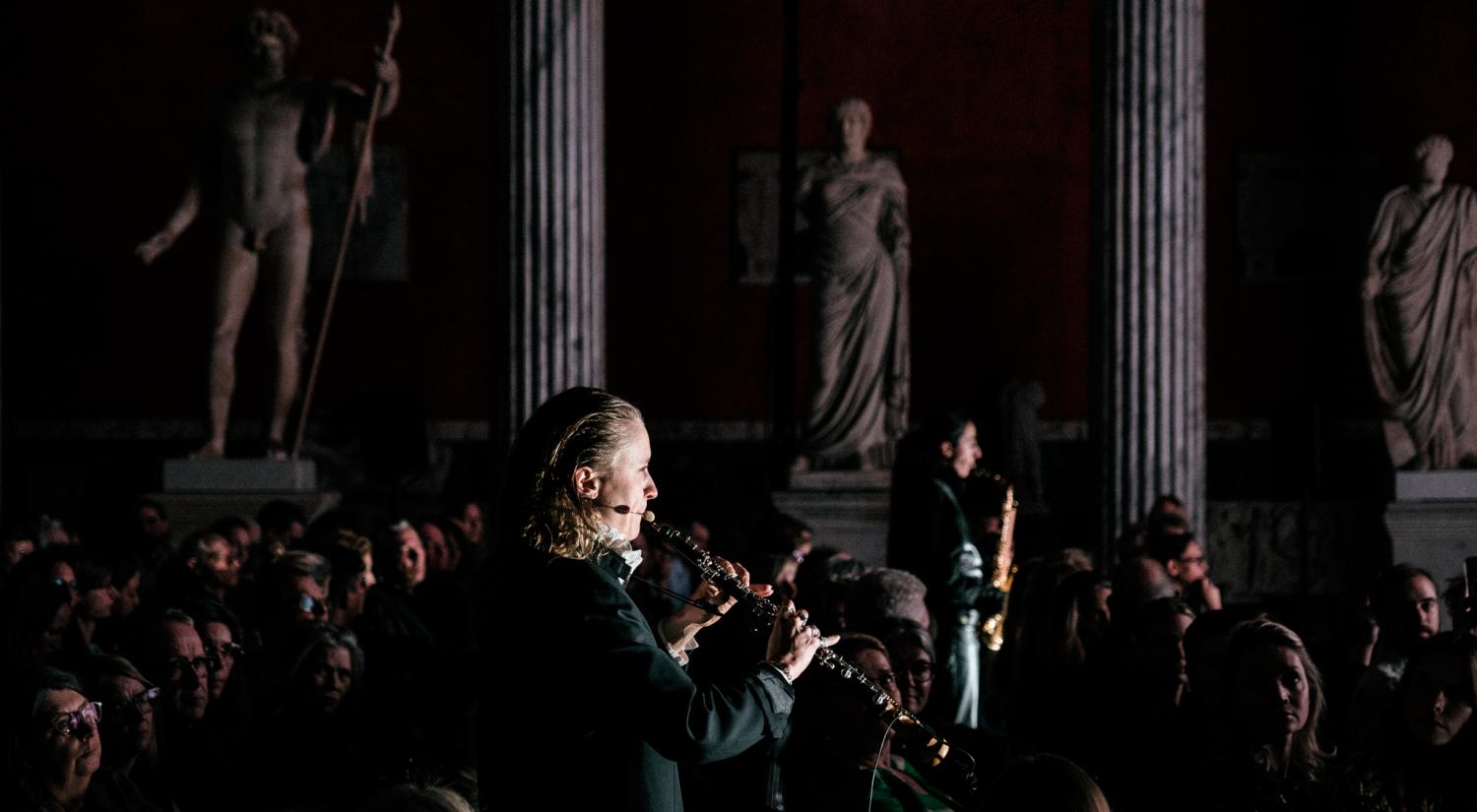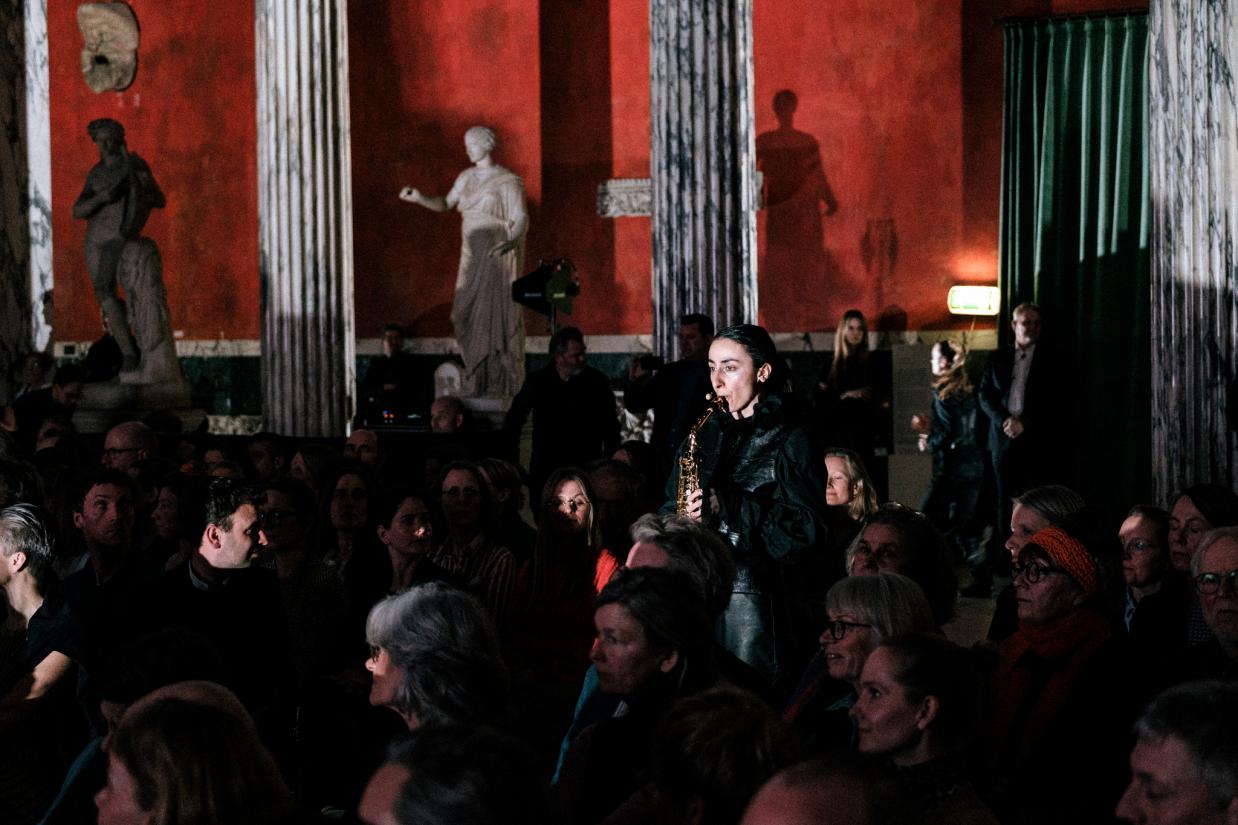Concept, direction, choreography: Miriam Kongstad
Performed by: Francesca Burattelli, Sigrid Stigsdatter, Miriam Kongstad
Musical composition: Francesca Burattelli, Nicolas Fehr, Miriam Kongstad
Video: Kari Leigh Rosenfeld
Quoted songs: All By Myself (Celine Dion, 1996), Careless Whisper (George Michael, 1984), I Can’t Make You Love Me (Bonnie Raitt, 1991), I Will Always Love You (Whitney Houston, 1992 / Dolly Parton, 1974), Nothing Compares 2 U (Sinéad O’Conner,1990), Take My Breath Away (Berlin, 1986), Un-break My Heart (Toni Braxton, 1996), Without You (Mariah Carey, 1993)
Catharsis, deriving from the Greek ‘kathairein,’ meaning to cleanse or purify, refers today to various forms of emotional release experienced through intense physical exercise, cognitive reflection, or sensory impressions. The word originates from Aristotle’s ‘The Poetics’ (c. 335 BC), one of the earliest surviving works of Greek dramatic theory. Aristotle described catharsis as the purging of emotions aroused in a spectator; the social function of the tragedy as a genre. He coined the term as a metaphor for the Greek ‘catamenia’ which, in its literal medical sense, refers to the release of menstrual fluid from a body. A recurring, bodily ritual — the culmination of a cycle of synergetic processes manifesting release, flow, transformation, and time. In the late 19th century, catharsis appeared as a phenomenon in the field of psychology, introduced by physician Josef Breuer and psychoanalyst Sigmund Freud. By allowing patients to consciously outburst repressed emotions, the treatment was related to childhood trauma but primarily invented to cure hysteria. The word hysteria directly translates from the Greek ‘hystera’, meaning uterus, and still today carries gendered connotations, hinting at emotionality as a predominantly female domain. Historically defined as a medical condition, hysteria pointed towards the ascribed risk, that female emotions, if ungoverned, could transform into excess, uncontrollability, hyperventilation, and panic attacks, overruling rational thinking. To be pathetic, on the other hand, is generally a non-gendered term, yet still refers to a hierarchy of social behavior. Pathetic, deriving from the Greek ‘pathos’ (the appeal to emotions), describes someone who appears to be sad, weak, or helpless, and therefore arouses pity, sympathy, or lack of respect. Someone at mercy of their emotions.
So, who will marry the hysteric and the pathetic?
In 2003, the world held its breath, as Madonna — dressed as a female bridegroom — kissed white-clad Britney Spears and Christina Aguilera on stage during the MTV Video Music Awards show. While causing a hugely emotional scandal, this iconic moment in the history of popular culture also served as a collective catharsis: three of the world’s then-biggest pop singers, performing female same-sex attraction, wrapped in wedding aesthetics, moreover, subverting what used to be a woman’s only path in life, marriage.
In most cultures, marriage forms the institutional ritual of love and generally constitutes the crossroad between the emotional and the judicial. An exemplary ceremonial act, where publicly shared emotions and pathos are no longer deemed pathetic or hysteric, exactly because of their containment within the very structure of a ritual. A ritual, as the French philosopher Roland Barthes describes it “protects us against the abysses of being. A ceremony protects like a house, something that allows one to live in one’s feelings … the ceremony of mourning acts like varnish, protects, insulates the skin against the atrocious burns of mourning. When there are no rituals to act as protective measures, life is wholly unprotected.”
Miriam Kongstad, 2023






